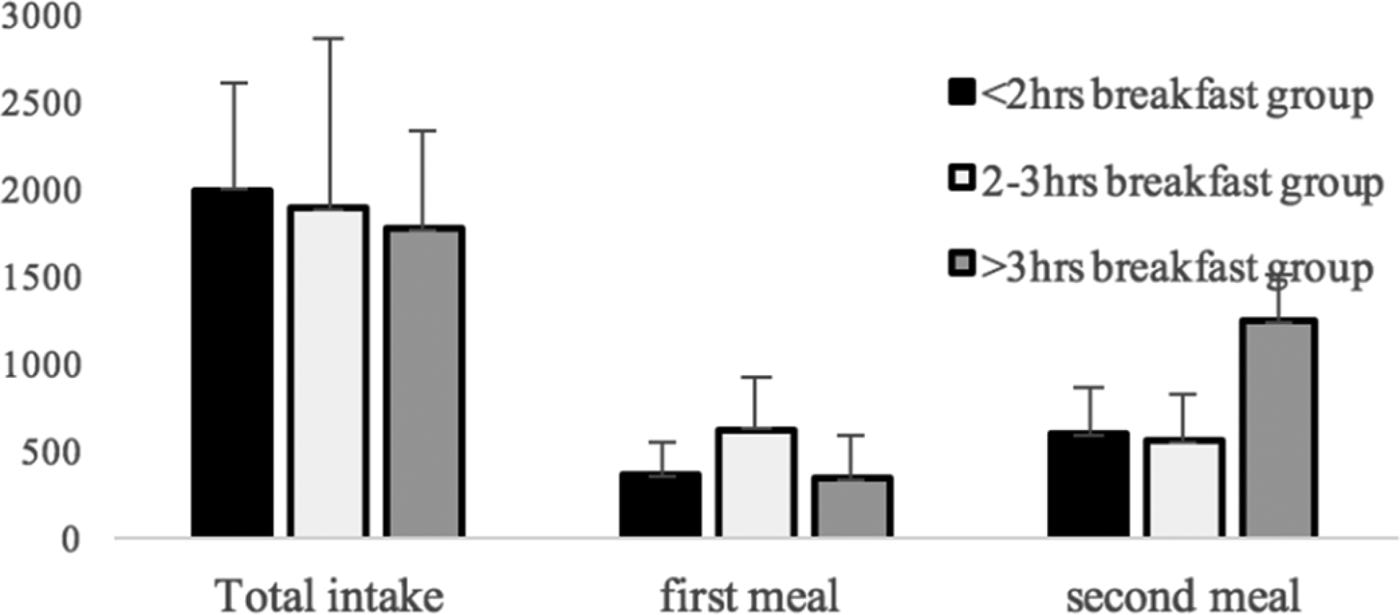Breakfast is considered to be the most important meal of the day as it affects nutritional and weight status, physical activity and academic performance( Reference Matthys, De Henauw, Bellemans, De Maeyer and De Backer 1 ). Despite these benefits, skipping and/or poor quality breakfast is quite common particularly among young people( Reference Tee, Botha, Laubscher and Jerling 2 ). Skipping breakfast may lead to increased hunger and consequent negative food choices( Reference O'Neil, Byrd-Bredbenner, Hayes, Jana, Klinger and Stephenson-Martin 3 ). Additionally, other meals of the day may not be able to fully compensate for some missed nutrients. Hence, breakfast skippers tend to have a poor diet quality compared to people who usually consume a good quality breakfast( Reference Rampersaud, Pereira, Girard, Adams and Metzl 4 ).
The aim of this study is to investigate the effect of breakfast timing on breakfast quality of young Singaporeans in post-secondary education. The sample included 50 students randomly recruited aged 17–21. Dietary intake was recorded using 24-hours recall. Participants were divided into 3 groups based on timing of breakfast after waking up: less than 2 h, n = 26; 2 to 3 h, n = 13; and more than 3 h, i.e. breakfast skippers, n = 11. ANOVA (with LSD test as a posthoc) was used to compare the means of nutrients between the three breakfast groups with p < 0·05 considered as the significance level.
Breakfast consumed 2–3 h after waking tended to contain the highest amount of fat (total, saturated and monounsaturated), protein, potassium and sodium followed by the >3 h and <2 h groups. The 2–3 h group also had more energy, fibre and micronutrients (iron, phosphorus, riboflavin, thiamine, zinc and vitamin C) than <2 h and >3 h. However, the <2 h breakfast had in average the highest amount of calcium and polyunsaturated fat but also sugar. Yet these differences were not significant aside from saturated fat. Saturated fat intake of 2–3 h breakfast group was significantly higher than the <2 h group (p < 0·001).
It was expected that a longer delay in the intake of the first meal would cause a higher energy consumption at the subsequent meal due to increased hunger. Although the >3 h group had the highest energy intake in their second meal (Fig. 1) this, alongside total daily energy intake was not significantly different between groups (p > 0·05).

Fig. 1. Energy intake (Kcal) for total day, first and second meals.
The >3 h breakfast group had the highest fat but the lowest carbohydrate in total intake, first and second meals. Protein intake for the >3 h group was also the lowest except for the first meal. For the >3 h group, delaying breakfast resulted in compensation of energy in subsequent meal with higher consumption of fat food.
For this sample of young Singaporeans, poor food choices may have contributed to less healthy nutritional content of first and second meals. As participants were students the majority of meals were obtained from the school canteen and fast food restaurants which usually serve foods/beverages high in fat, sodium and sugar.



